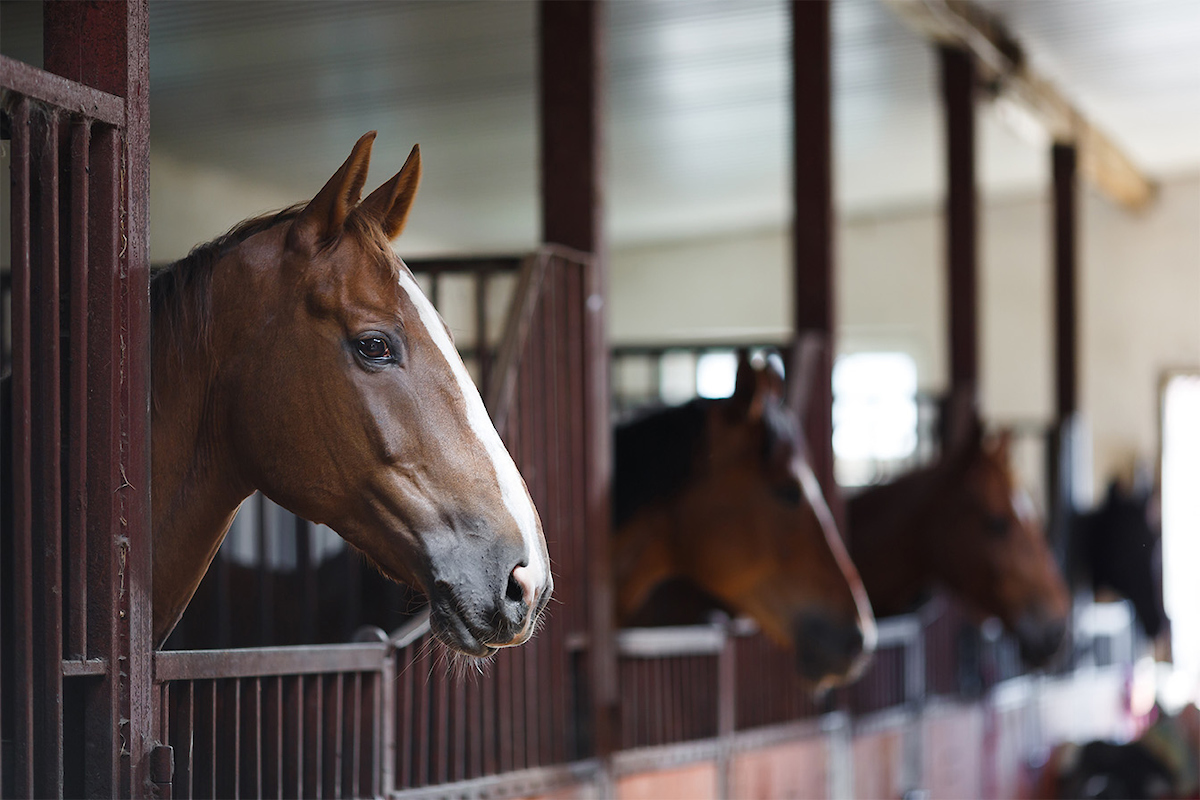Equine Cushings Disease and Equine Metabolic Syndrome are two of the most common metabolic/hormone disorders that affect horses and ponies. Cushings generally affects older or veteran horses whilst EMS can be known to develop in horses of any age. The two are very different in the effect they have; however, they do share some physical symptoms such as the development of laminitis and abnormal fat distribution including deposits in the crest of the neck. In the beginning stages of either your vet may suggest hormone tests to determine which of the conditions your horse is suffering from.
What is Equine Cushings?
Cushings is a disease that occurs most frequently in horses and ponies
over 10yrs old. Damage to a horse’s hormone production system can cause hyperactivity in the Pituitary Gland which signals release of excess hormones like ACTH, which then enter the circulatory system and begin to negatively affect the whole body. Signs can include everything from an increased coat length to laminitis, excessive sweating to weight loss and/or increased urination. The disease is not curable but treatment and good management can significantly reduce the severity of clinical signs.
You should always consult your vet if you are concerned about your horse’s health. Here are some signs you might notice in a horse suffering from Cushings:
- Slow shedding of thick winter coat
- Laminitis
- An increased level of water intake
- Increased frequency and amount of urination
- Muscle wastage
- A pot belly and a swayed back
- Increased sweating
- Weight loss despite an increase in appetite
Treatment Options
Equine Cushings can’t be cured but there are a number of options available to slow the effects and manage the symptoms.
- Pergolide is the most common drug used to treat the disease in the UK but it isn’t effective in all cases.
- Managing the clinical symptoms will help you to keep your horse with Cushings comfortable. These include:
- Recognising early signs of laminitis so treatment can start quickly.
- Regularly clipping long, thick hair.
- Ensuring fresh water is always available.
- Feeding a diet that is low in starch and sugar.
- Keeping meal size small.
- Changing bedding more frequently.
- Providing electrolytes to replace losses in sweat If recommended by your vet.


CushCare Condition has been scientifically designed by our experts to provide additional conditioning calories in a low starch, low sugar format that is suitable for older horses that have difficulty chewing and those with Cushing’s who are underconditioned and suffering from muscle wastage
- High in oil to provide calories for weight gain and condition whilst keeping starch and sugar low.
- Contains Quality protein (Essential amino acids like Lysine to support muscle maintenance)
- Added B vitamins and carnitine.
- QLC Antioxidant package supporting the bodys natural antioxidant capacity and the ability to ‘mop up’ excess free radicals that may be associated with ageing.
- Contains live Actisaf yeast (probiotic) along with FOS and MOS (prebiotics) to promote a healthy digestive system.
- Omega 3 fatty acids and glucosamine nutritionally support joint function.
- Contains a unique herbal blend including Cinnamon and Chaste tree berries (Vitex agnus castus) to support hormone function
- Digestible fibre provides natural calories and promotes healthy hindgut function.

What is Equine Metabolic Syndrome (EMS)?
EMS is a syndrome that usually occurs in horses and ponies between 5 and 15 years of age. Characterised by Insulin resistance, horses that are suffering can become very prone to excessive weight gain and/or resistant to weight loss.
You should always consult your vet if you are concerned about your horse’s health. Here are some signs you might notice in a horse suffering from EMS:
- Bulges of fat, normally around the crest, shoulders and rump.
- Laminitis flare ups, usually acute.
- Uncharacteristic sluggishness.
Treatment Options
Much like Equine Cushings, there is no cure, but the disorder can be managed through a good nutritional plan and exercise with an aim to prevent them developing Laminitis.
A good feeding regime is vital in the management of EMS ensuring:
- A low-calorie intake
- Hay and pasture are analysed where possible to assess carbohydrate content
- Treats, grains and sweet feeds are avoided
- Turnout Is very much restricted to control calorie and sugar intake
- Provision of a Balancer or vitamin and mineral supplement
Feeds that supply vitamins, minerals, and antioxidants are important. Horses and ponies with EMS do not need large amounts of a concentrate feed and also may need only 1.5% of their bodyweight per day in forage, or less under the guidance of your vet, but they still require a fully balanced diet to support health and well-being. Feeding a low intake, low calorie balancer or vitamin and mineral supplement is ideal.
Balancers that also contain added antioxidants are extra useful because antioxidants help neutralise free radicals and research has shown that horses prone to laminitis and those who are suffering from flare ups produce more free radicals than horses who do not suffer from laminitis, likely due to the increased inflammatory cytokines.





